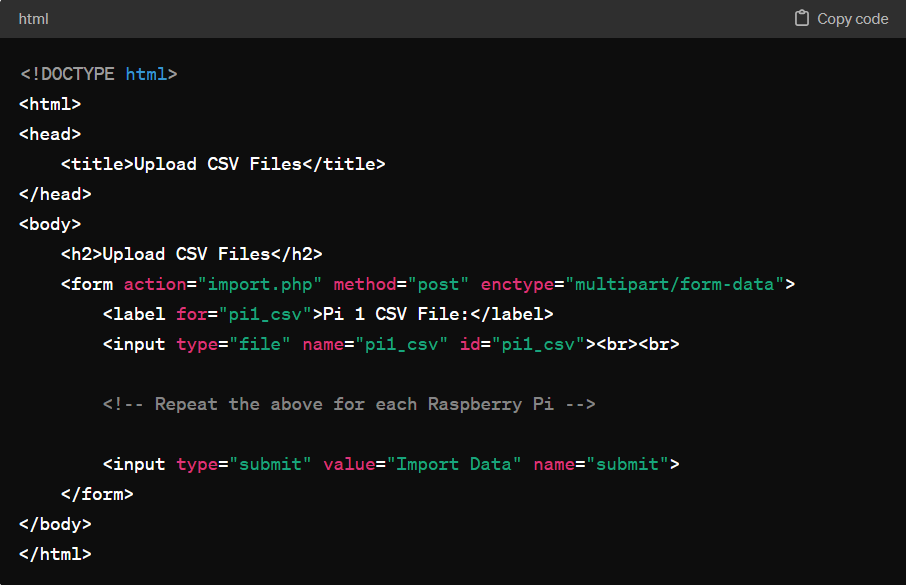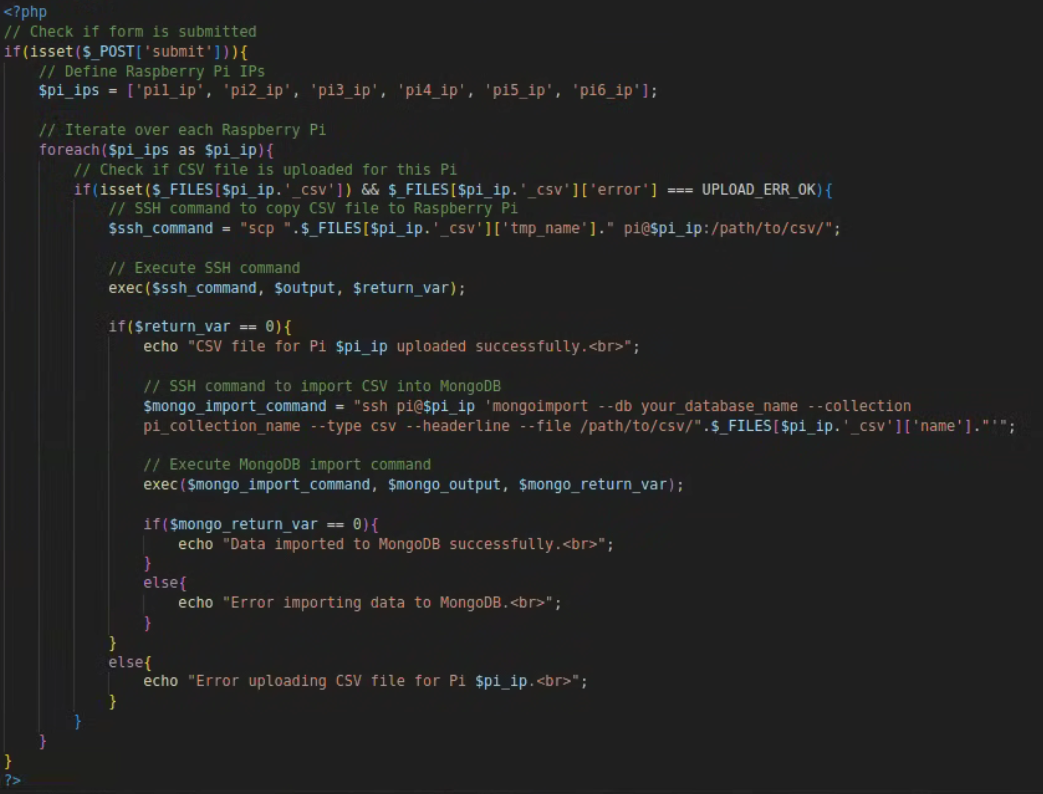Step 1: Design MongoDB Schema
Plan the structure of your MongoDB database to accommodate data from multiple Raspberry Pis. Each Raspberry Pi will likely correspond to a separate collection, with each document representing a data point captured at a synchronized timestamp.
Step 2: Set up MongoDB Database
Install and configure MongoDB on your server. Create a new database and collections according to the schema designed in Step 1.
Step 3: Data Import from CSV
Create an HTML form where users can upload CSV files for each Raspberry Pi. This form will have input fields for each CSV file and a submit button to trigger the import process.

Step 4: Write PHP Script to Import Data
Create a PHP script (import.php) that will handle the file uploads, execute SSH commands to import data into MongoDB, and provide feedback to the user.

Step 5: Combine Data from Multiple Pis
a. Using MongoDB Aggregation:
Utilize MongoDB's aggregation framework to merge data from multiple collections based on synchronized timestamps.
Use the $lookup stage to perform left outer joins between collections based on the timestamp field.
b. Client-Side Processing:
Retrieve data from each collection separately and perform the join operation in your application code.
Use synchronized timestamps as keys for merging data.
Step 6: Preprocessing
Prepare the integrated dataset for machine learning by performing necessary preprocessing steps like handling missing values, normalizing or scaling features, and encoding categorical variables.
Step 7: Export Integrated Dataset
Export the integrated dataset from MongoDB in a suitable format for training machine learning models. CSV or JSON formats are common choices.
Step 8: Train Supervised Machine Learning Model
Utilize machine learning libraries such as scikit-learn, TensorFlow, or PyTorch to train your supervised machine learning model on the integrated dataset.
Step 9: Evaluation and Iteration
Evaluate the performance of your model using appropriate metrics. Iterate on data preprocessing and model training processes as needed to improve performance.
Conclusion:
By following these logical steps, you can effectively store data from multiple Raspberry Pis into MongoDB and prepare it for supervised machine learning tasks. Integration of data from various sources enables comprehensive analysis and insights for optimizing hydroponic farming operations.

